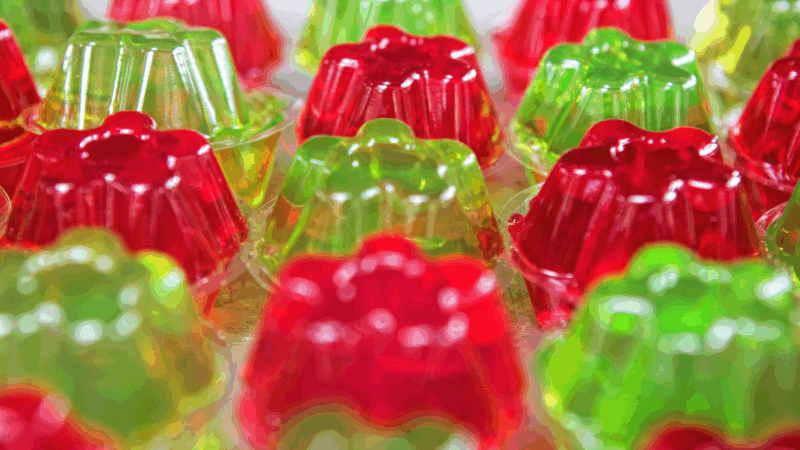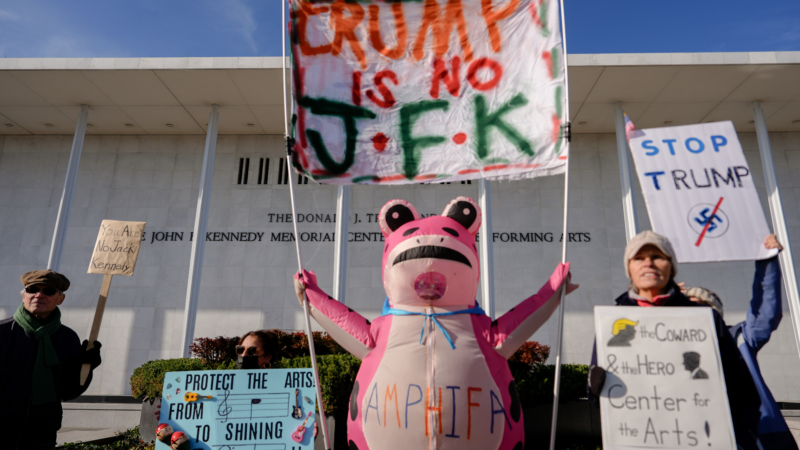Kraft Heinz to remove artificial dyes from all products, like Jell-O and Kool-Aid
Kraft Heinz says it will be removing all artificial food dyes from products sold in the U.S. starting in 2027, and it will stop making new products with these dyes, effective immediately.
In a statement, Kraft Heinz said nearly 90% of its U.S. products are already free of synthetic dyes. It says it has invested in removing the dyes in remaining products or replacing them with natural colors. A company spokesperson tells NPR that many of the products that still contain artificial dyes are in the beverage and dessert category. These include some products sold under brands such as Crystal Light, Kool-Aid, Jell-O and Jet-Puffed.
“The vast majority of our products use natural or no colors, and we’ve been on a journey to reduce our use of FD&C colors across the remainder of our portfolio,” Pedro Navio, North America president at Kraft Heinz, said in a statement, adding, “Our iconic Heinz Tomato Ketchup has never had artificial dyes.”
About a decade ago, the company removed the artificial dyes used to give its Kraft Mac & Cheese its iconic yellow-orange hue; that color now comes from spices like paprika and turmeric.
The company’s announcement comes nearly two months after federal health officials said they would work with the food industry to voluntarily phase out the use of petroleum-based food dyes by the end of next year.
“We are going to get rid of the dyes and then one by one, we’re going to get rid of every ingredient and additive in food that we can legally address,” Health Secretary Robert F. Kennedy Jr. said at the time.
Some studies have linked these dyes to negative effects on children’s behavior and mental health.
The Consumer Brands Association, which represents U.S. packaged food manufacturers, has defended the industry’s current ingredients. In a statement back in April, Melissa Hockstad, the group’s CEO, said “the ingredients used in America’s food supply have been rigorously studied … and have been demonstrated to be safe.”
Some food manufacturers have already been working to phase out synthetic dyes. The Food and Drug Administration recently approved three new all-natural dyes for manufacturers to use instead. But switching isn’t necessarily easy.
As NPR has reported, extracting large volumes of color from natural sources is far more complex than mixing chemical dyes. Some colors, such as blues, can be difficult to get in large quantities from natural sources, which can raise the costs of reformulating products. And the resulting colors may not be as vivid as those achieved with synthetic dyes.
National Guard arrives in New Orleans for 1st New Year’s since Bourbon Street attack
Nearly a year after a New Year's Day truck attack on Bourbon Street left 14 dead, New Orleans officials are still seeking permanent security solutions.
National Guard arrives in New Orleans for 1st New Year’s since Bourbon Street attack
Nearly a year after a New Year's Day truck attack on Bourbon Street left 14 dead, New Orleans officials are still seeking permanent security solutions.
Isiah Whitlock Jr., actor from ‘The Wire,’ ‘Veep’ and Spike Lee films, dies at 71
Actor Isiah Whitlock Jr. has died at age 71. Whitlock played the corrupt state Sen. Clay Davis on "The Wire." He also appeared in several Spike Lee films, including "25th Hour" and "BlacKkKlansman."
CIA behind strike at Venezuelan dock that Trump claims was used by drug smugglers, AP sources say
The CIA was behind a drone strike last week at a docking area believed to have been used by Venezuelan drug cartels. That's according to two people familiar with details of the operation.
Kennedy Center renaming prompts a new round of cancellations
The Kennedy Center is ending the year with a new round of artists saying they are canceling scheduled performances after President Donald Trump's name was added to the facility.
Trump administration says it’s freezing child care funds to Minnesota
President Trump's administration announced that it's freezing child care funds to Minnesota after a series of fraud schemes in recent years.









